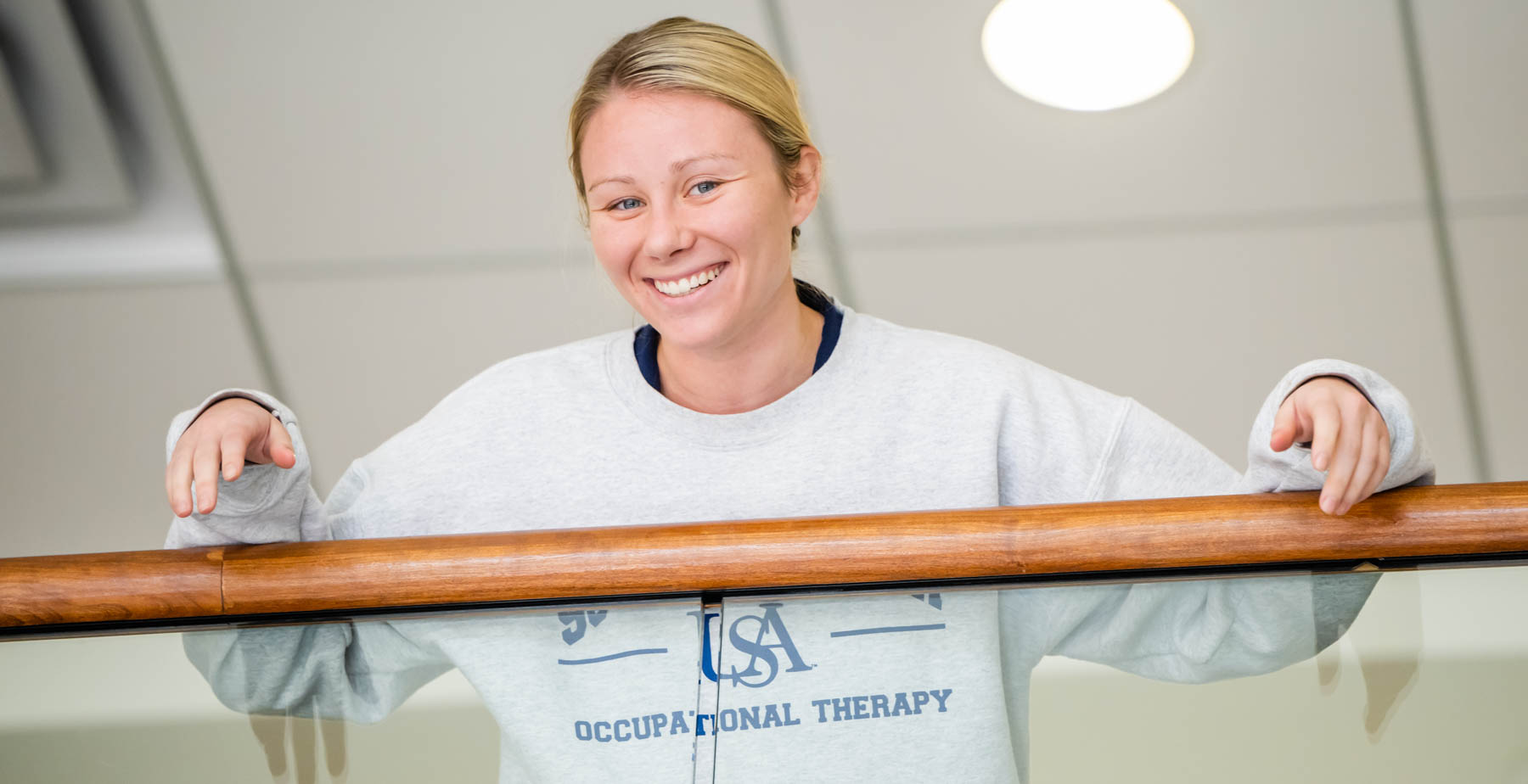South Grad Rides Gravitational Wave
Posted on March 10, 2016

First published a century ago, Albert Einstein’s general theory of relativity provided scientists with insights that transformed physics and astronomy, and made possible such technological advancements as the modern Global Positioning System. One of the theory’s key predictions is that accelerating masses would disturb the fabric of spacetime, producing gravitational waves which travel outward like ripples in a pond. Scientists recently reported the first direct detection of these gravitational waves, produced by the violent collision of two black holes in the distant universe.
The waves were detected on September 14, 2015, by the twin Laser Interferometer Gravitational-wave Observatory (LIGO) detectors in Livingston, La., and Hanford, Wash. The LIGO Scientific Collaboration (LSC) and the Virgo Collaboration published this detection in the journal Physical Review Letters using data from both sites.
This extraordinary achievement represents decades of scientific work and is being heralded as “the discovery of the century.” The LSC is made up of over 1,000 scientists from more than 90 universities and research institutions around the world. University of South Alabama graduate Chris Buchanan is among some 250 students who are strong contributing members of the collaboration.
He was a member of USA’s Honors Program and graduated in 2012 with a bachelor of science in physics. (His father, James, is a 1983 USA civil engineering graduate and chief operating officer of an engineering services company in Huntsville.) Buchanan is now a graduate student at LSU, working at the LIGO Livingston Observatory under LSC spokesperson and professor of physics and astronomy at LSU Dr. Gabriela González. As a part of LSU’s Experimental Relativity Group, Buchanan focuses on the instrument’s data quality, characterizing noise in the detector.
Explain the significance of the recent discovery of gravitational waves?
For someone like myself, there are two ways to answer this question. Very specifically, this direct detection represents the last great prediction of Einstein’s general theory of relativity. Gravitational waves are so mind-bogglingly tiny that even Einstein believed we would never be able to directly observe them. But humans can be very clever, and with decades of research and hundreds of the greatest minds in the world, it happened! The instrument is arguably the most sensitive measuring device ever created, measuring changes in distance of about 1/1000th the diameter of a proton. The gravitational waves that we detected were from the merger of two black holes, each with about 30 times the mass of our sun. This kind of collision of two black holes had also been predicted, but this is the first observation of such an event.
More generally, this achievement is the beginning of a rich new era of discovery and observation in astronomy. We have opened a new window to the universe, and will be able to observe some of the most mysterious and cataclysmic environments out there–dead husks of old stars colliding, violent supernova explosions of stars, and potentially many more. This event truly marks the birth of gravitational wave astronomy, and it feels great just to be involved!
The LIGO Scientific Collaboration has an Education and Public Outreach group that provides great educational resources, and has senior LSC members poised to answer these types of questions and more! Their website has everything from classroom activities to science summaries tailored to a casual reader. I strongly encourage anyone with interest to explore these resources and email any questions they may have.
The scope of this project is very impressive, involving researchers worldwide. Talk about this international commitment.
The two observatories used for this initial detection are funded by the National Science Foundation, with a cost of around $1.1 billion to date. The project was conceived, built, and is run by Caltech and MIT. Of the 1,000+ scientists in the LSC, 558 are from the United States, belonging to separate research groups. These do not receive funding as a collaboration–each LSC group receives funding through very competitive research award systems, and this guarantees the quality of the funded research. In addition, many other countries and research groups have contributed funds (totaling nearly $20 million) and manpower to be involved with this great project. The Louisiana and Washington detectors are just the first in an international network of observatories which will be available.
Advanced LIGO’s next observing period is planned for later this year, at which time we hope that the Advanced Virgo detector in Italy will join us in the hunt for gravitational waves. In addition, a gravitational-wave observatory in Japan may be operational as early as 2018 and the Indian Cabinet has granted in-principle approval for an Advanced LIGO detector in India. Adding more detectors around the globe will improve our ability to tell where a signal is coming from, and the commitment of time, resources, and manpower working toward this end is incredible. This project and the associated collaborations are proving what we can do as an international community to advance science, and is a continuing example to motivate lawmakers and funding agencies to support basic research.
While the scientific community has hailed this news as one of humanity's greatest achievements, others may not fully grasp its importance. In layperson's terms, what are the implications of this discovery?
The impacts of this remarkable discovery cannot be understated. From a purely scientific perspective, it is a wonderful achievement that helps us better understand and study our universe on a fundamental level. And for a scientist, that is more than enough! We are passionately driven to understand the laws of nature, and to do that we have to experiment.
We also know, and to many this is even more important, that by contributing to the progress of society we are giving our nation and the world a return on its investment–knowledge and technology that can be manipulated and applied in a wide variety of ways. There is a large body of literature that demonstrates the rates of return from R&D (Research & Development) investments, and we can see examples of this in our everyday life. Spin-off technologies are already becoming apparent from LIGO–we’ve had to develop the world’s best mirrors and optics and some of the world’s largest vacuum systems, as well as pushing the frontiers of quantum measurement science, high performance computing, vibration isolation systems, timekeeping systems and others.
In some cases, the science had to be advanced in order to develop the technological improvements necessary for this project. And in addition to all of this, one of the biggest impacts has been the training of the scientific workforce and in advancing science education. LIGO invites about 20,000 students every year to visit the observatories, and my research group has personally been involved in some of these outreach projects. Scientists, like myself, that are trained in the LSC are at the forefront of science and technology, working in multidisciplinary fields requiring creative problem solving using everything from basic physics and astrophysics, to precision measurement technology to big data analysis.
I echo the sentiments of the collaboration leaders, that the majesty of exploring the universe motivates this ambitious experiment, and as with all fundamental science, LIGO offers other important benefits, from technology to science education, and training the workforce of scientists in America and worldwide. These are the scientists who are driven, passionately, to discover, invent and innovate. The investments in research like this are what drive our economy, enhance our security and ensure our global leadership.
You've stated that your education at USA played a major role in positioning you to be part of this project. Would you please elaborate on that?
I am extremely grateful to have received my undergraduate education from USA, because of the level of preparation it provided me for graduate school. When looking for a college after high school, I was primarily focused on faculty that would give me plenty of personal attention and opportunity to do research. At South, I found exactly that. The teaching styles and research interests found in the faculty at the physics department are superb! They hold their students to a very high standard, and they work extremely hard to ensure that those students meet those standards. It was that encouraging atmosphere and confident leadership that allowed me to develop those skills necessary to become a successful, productive junior scientist at LSU.
My advisor at the time, Dr. Romulus Godang, worked tirelessly to train me to be a proficient researcher and showed me how to dedicate myself to a long-term project. My four years of research at South culminated in the physics department’s first honors thesis, and my constant communication with my thesis committee to produce each draft of that report was great preparation for research and documentation procedures in the LSC. I have been trained to diagnose a problem critically and determine viable solutions, while implementing and applying the work inside of a much larger group. Even now, mentorship is crucial to success while working with LIGO, and the mentorship that USA provided during my undergraduate education has been extremely valuable.
The University of South Alabama Honors Program was also a crucial part of my time at South. In addition to pushing me to success in my major field, I learned to appreciate life and education outside of physics. The social aspects to the honors program enriched my undergraduate experience in a way that is hard to describe, providing a unique outlet outside of academics, and the specialty seminars and honors classes provided the opportunity to nurture deep and creative thought.
USA has an amazing wealth of faculty and resources, particularly in the physics department and the honors program, and has distinguished itself by supporting those programs, as well as those student-run organizations (such as the Society of Physics Students and the Astronomy Club) that allow students to further invest themselves in their educational experience in deeper, more personalized ways. I would certainly not be where I am today without that source of guidance and resources, and I am a proud USA alumnus!





